Global S&T Development Trend Analysis Platform of Resources and Environment
| Smart focus on Mars | |
| admin | |
| 2021-11-04 | |
| 发布年 | 2021 |
| 语种 | 英语 |
| 国家 | 欧洲 |
| 领域 | 地球科学 |
| 正文(英文) | From panoramas to close-ups, from 3D maps to a wheel selfie, the Earth-bound twin of ESA’s Rosalind Franklin rover is testing the wide range of photo settings that will deliver the greatest science possible during the ExoMars mission on the Red Planet. The scientific eyes of the rover are set on the Panoramic Camera suite known as PanCam. The replica atop the mast of the Ground Test Model rover is achieving a level of detail similar to what is expected from Rosalind Franklin in 2023. The target over the last few months has been the reddish and grainy, sometimes rocky surface of the Mars Terrain Simulator at the ALTEC premises in Turin, Italy. 
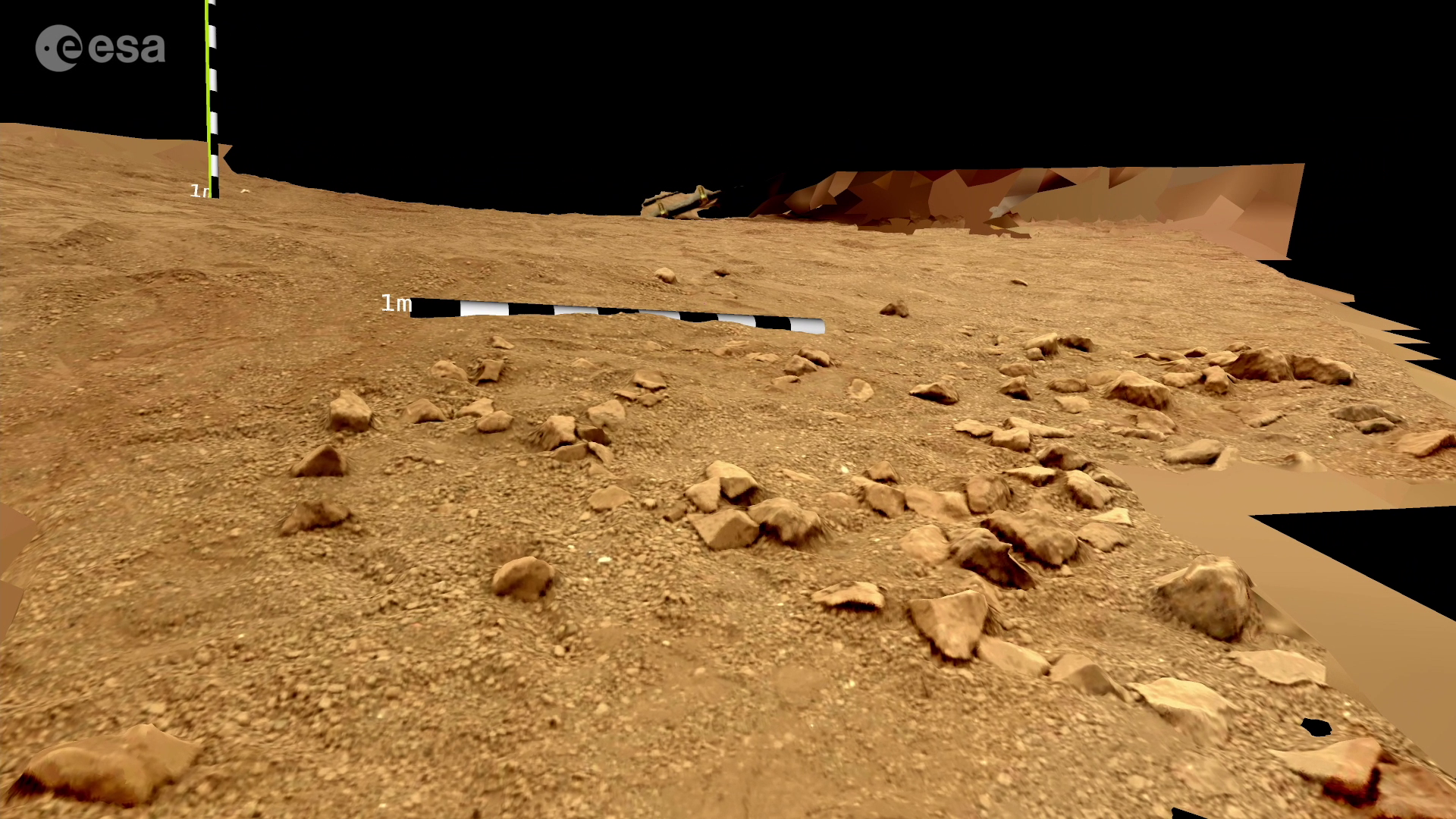
Hovering over martian landscape
Access the video “Since we will be looking for water and life on Mars, testing Rosalind Franklin’s main cameras is particularly important in the search for water-rich minerals,” explains Andrew Coates, PanCam principal investigator and Professor at the UCL Mullard Space Science Laboratory in the UK. PanCam does not have just one pair, but three ‘science eyes’: one high-resolution and two wide-angle cameras. Their unique colour imaging allows for “water-rich mineral identification and outstanding 3D vision, way better than the human eyes. The views from PanCam will give us key insights on the martian landscape,” adds Andrew. Science on top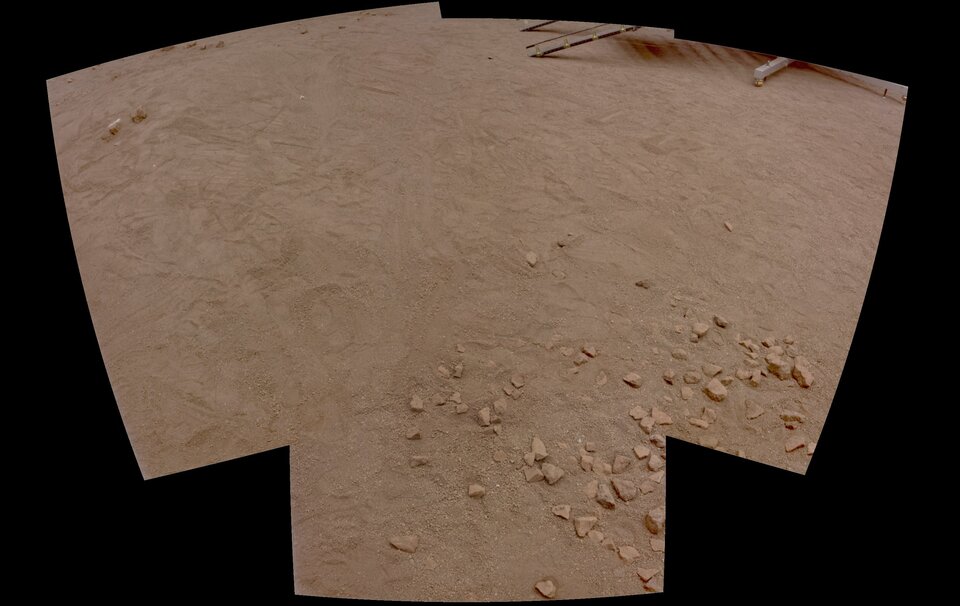
Engineers have packed as much science as they could into the camera system. The two wide-angle cameras (WACs) are set 50 cm apart and form a stereo pair that images what is in front of the rover from a vantage point about two metres above the ground. Scientists create 3D pictures and depth maps by overlaying simultaneous snapshots. “Besides plotting routes where the rover can go, these cameras help us do geology and atmospheric science,” says Andrew. 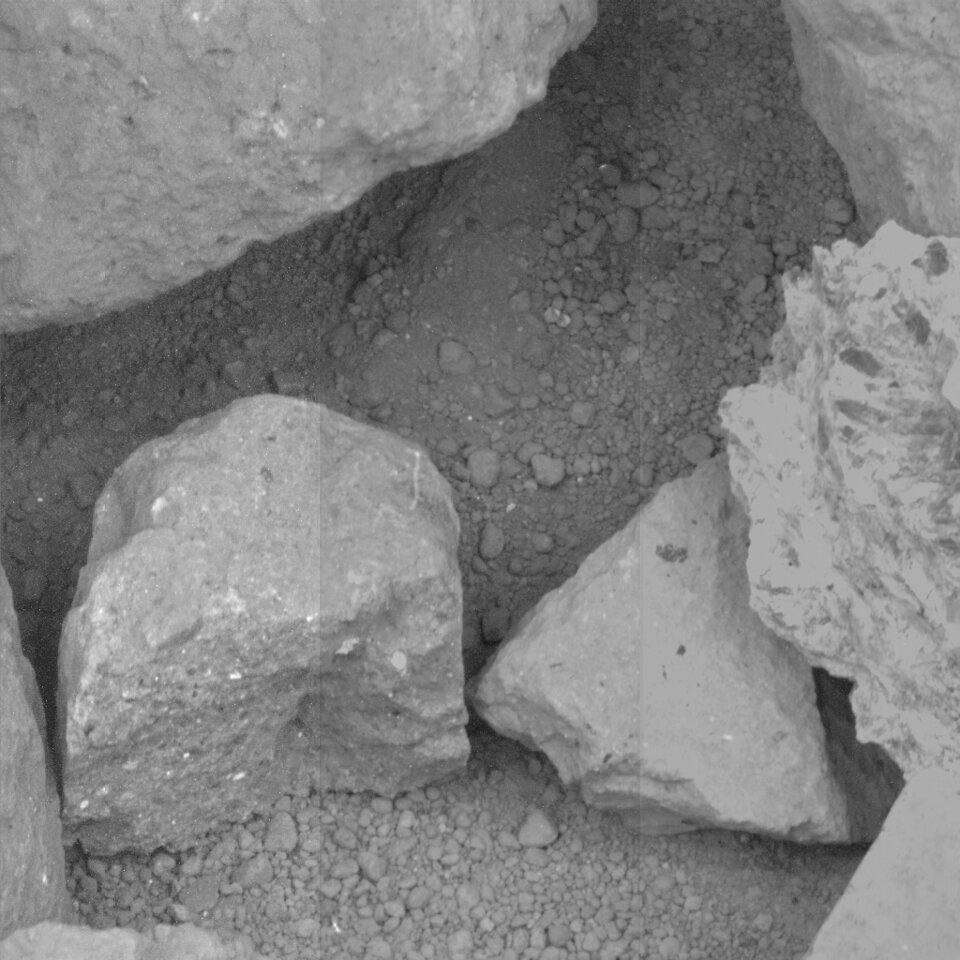
The High Resolution Camera (HRC) has eight times the resolution of the wide-angle cameras to closely examine rock texture and grain size in colour. This powerful camera “will help us investigate very fine details in outcrops, rocks and soils, find the most promising spots to drill, and take images of the samples before they are sent to the rover’s laboratory,” says Nicole Schmitz, PanCam co-principal investigator responsible for the high-resolution camera at the DLR Institute of Planetary Research, Germany. Mounted below is the infrared spectrometer (ISEM) that analyses the geochemistry of the rocks. HRC and ISEM are a well-matched couple. They are co-aligned, so that scientists can see in the HRC images where ISEM took its measurements. Rainbow eyes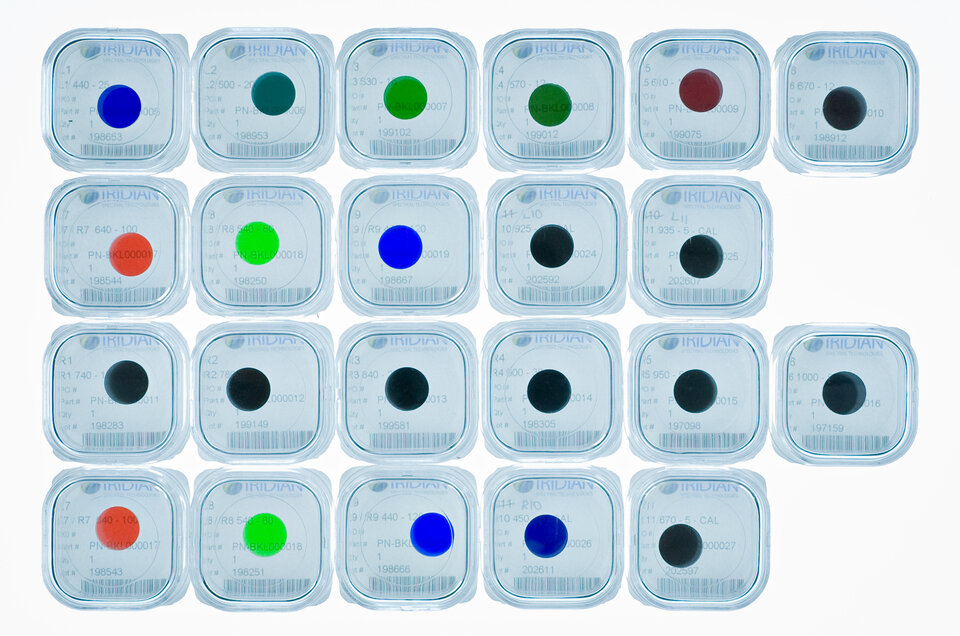
Humans and smartphones can only see colours in visible light. PanCam can ‘see’ in 19 colours, in the visible and near infrared wavelengths. Each of the wide-angle cameras has a filter wheel with 11 positions to look at the colours of the rocks and the martian sky. This special carousel will allow the rover to stare at the Sun, find the amount of dust in the atmosphere and measure the water vapour content during sunsets on Mars. 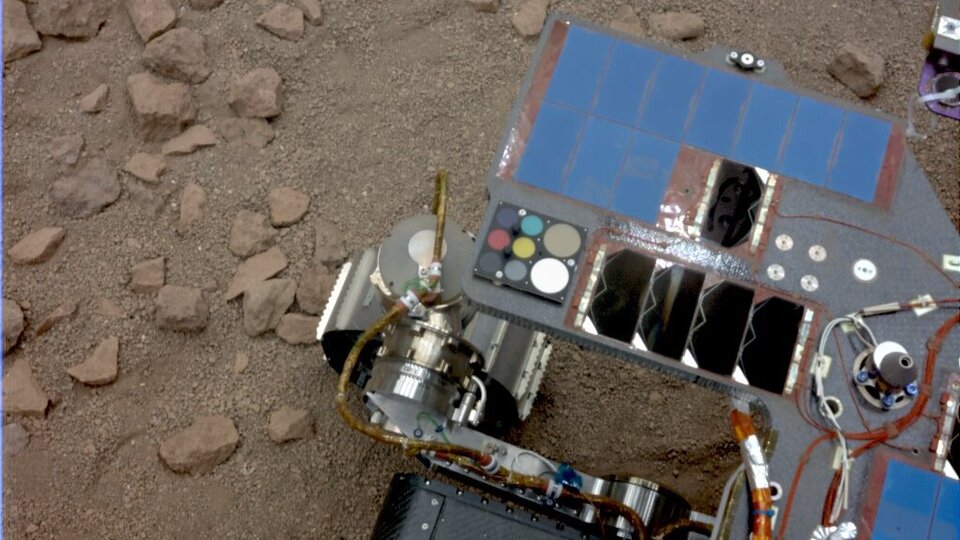
A calibration target mounted on the rover’s solar array top deck, comprising a palette of stained glass similar to that of church windows, will help PanCam get its colours right. Mars-proofPanCam can withstand much harsher conditions than smartphone cameras on Earth. The hardware can cope with extreme temperatures, from zero degrees during the day down to –120 degrees Celsius during the cold martian nights. The sensors are also resistant to the high radiation environment during the journey to Mars and on the surface of the planet. 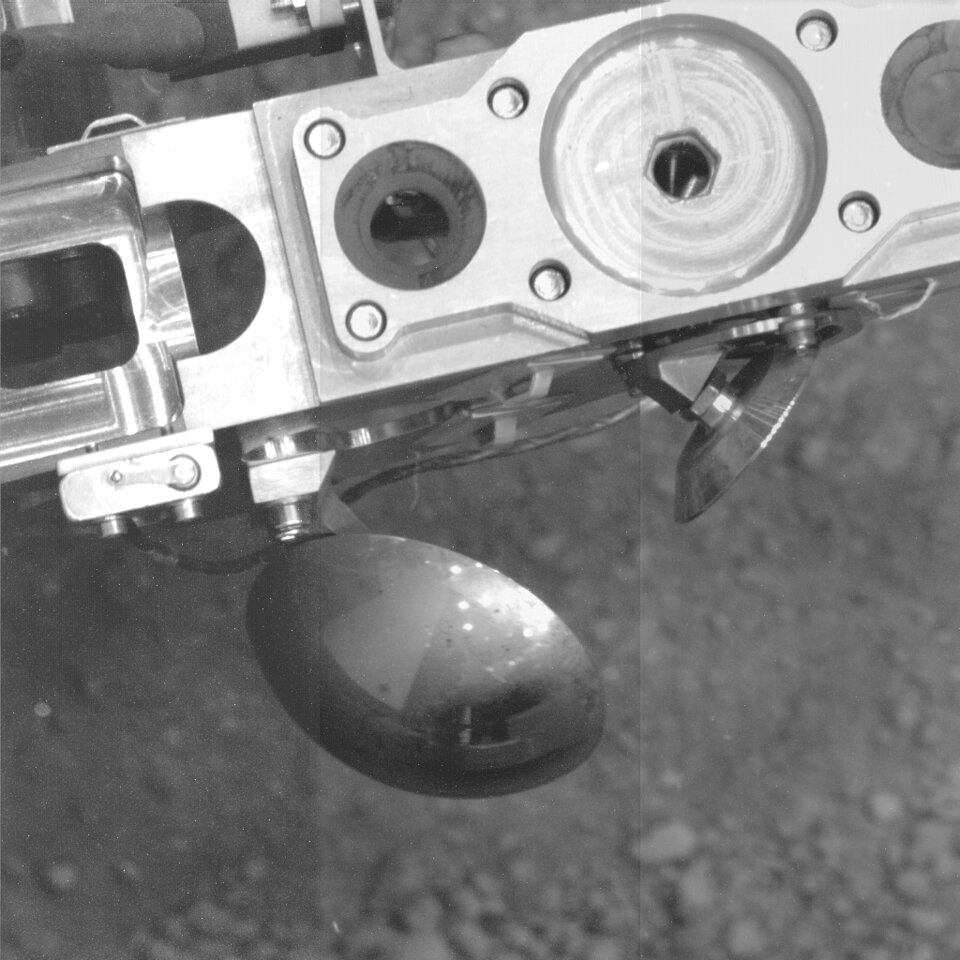
“It was challenging to build a robust enough camera with adjustable focus to take high resolution images of very close and far away targets,” says Nicole. Rosalind Franklin can also take a look at herself – a small spherical mirror close to one of the rover’s wheels can be used to get a view underneath the rover. The Rover Inspection Mirror, mounted near a rover wheel, will enable PanCam to capture images from underneath the rover. There is yet another camera which will come in to play for martian shots in upcoming tests. The Close-Up Imager, CLUPI, will provide detailed views of the soil that is churned out by the drilling action. When the drill is in ‘stowed’ position this camera can also take photos of the landscape to the side of the rover. |
| URL | 查看原文 |
| 来源平台 | European Space Agency |
| 文献类型 | 新闻 |
| 条目标识符 | http://119.78.100.173/C666/handle/2XK7JSWQ/340565 |
| 专题 | 地球科学 |
| 推荐引用方式 GB/T 7714 | admin. Smart focus on Mars. 2021. |
| 条目包含的文件 | 条目无相关文件。 | |||||
| 个性服务 |
| 推荐该条目 |
| 保存到收藏夹 |
| 查看访问统计 |
| 导出为Endnote文件 |
| 谷歌学术 |
| 谷歌学术中相似的文章 |
| [admin]的文章 |
| 百度学术 |
| 百度学术中相似的文章 |
| [admin]的文章 |
| 必应学术 |
| 必应学术中相似的文章 |
| [admin]的文章 |
| 相关权益政策 |
| 暂无数据 |
| 收藏/分享 |
除非特别说明,本系统中所有内容都受版权保护,并保留所有权利。
修改评论